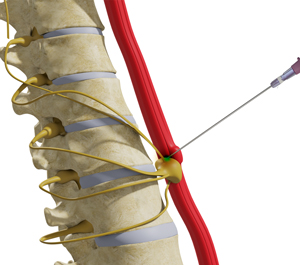
What is a Celiac Plexus Block?
The celiac plexus is a bundle of nerves located in the upper abdomen. It is situated at the back of the aorta and close to the pancreas and conveys pain signals to your brain. These pain impulses are conveyed from your liver, pancreas, kidneys, spleen, gallbladder, and intestines (bowels).
A celiac plexus block, also known as a celiac nerve block, is a percutaneous procedure to treat chronic abdominal pain related to the celiac plexus. The procedure involves administering an injection containing a local anesthetic and a steroid medication into or around the celiac plexus to block the transmission of pain impulses from the upper abdomen to the brain, thereby relieving abdominal pain.
Indications for Celiac Plexus Block
Your physician may recommend a celiac plexus block for the treatment of recurrent and persistent abdominal pain not responsive to other treatments such as oral pain medications. The abdominal pain may occur due to advanced cancers of the upper abdominal organs such as the pancreas, small bowel, stomach, duodenum, biliary tract, and liver or as a result of enlarged lymph nodes.
Preparation for Celiac Plexus Block
Pre-procedure preparation for a celiac plexus block will involve the following steps:
- A thorough examination is performed by your doctor to check for any medical issues that need to be addressed prior to the procedure.
- Depending on your medical history, social history, and age, you may need to undergo tests such as blood work and imaging to help detect any abnormalities that could threaten the safety of the procedure.
- You will be asked if you have allergies to medications, anesthesia, or latex.
- You should inform your doctor of any medications, vitamins, or supplements that you are taking.
- You may need to refrain from vitamins and supplements or medications such as blood thinners for a week or two prior to the procedure.
- You should refrain from alcohol or tobacco at least a few days prior to the procedure.
- You should not consume any solids or liquids at least 8 hours prior to the procedure.
- Refrain from wearing any creams or makeup and metallic objects such as jewelry, watch, piercings, and so on.
- You should arrange for someone to drive you home after the procedure.
- A written consent will be obtained from you after the procedure has been explained in detail.
Procedure for Celiac Plexus Block
Celiac plexus block is a minimally invasive percutaneous (through the skin) procedure that takes about an hour and you may go home on the same day. In general, the procedure involves the following steps:
- You will lie on your stomach on an X-ray table.
- Intravenous medication is administered to relax you.
- Your physician will then administer a local anesthetic to numb the area of skin on your back receiving the injection.
- Under X-ray guidance, your physician will perform the following:
- Determines precisely where the celiac plexus is located for subsequent injection
- Places a fine needle into the back just adjacent to the spine and injects anesthetic after the target is established
- Injects a second needle on the other side of the spine to administer a dye into the body to confirm that the correct area is being targeted
- Confirms that the second needle is in the right spot and administers pain medication such as epinephrine or steroid to numb the nerves in the area. Phenol or alcohol may also be used to destroy the nerves.
- The needle is removed, and a bandage is applied to the treatment site.
Post Procedural Care and Recovery
In general, post procedural care instructions and recovery after celiac plexus block will involve the following steps:
- You will be transferred to the recovery area where your nurse will closely observe you for any allergic/anesthetic reactions and monitor your vital signs.
- You may feel nauseous, drowsy, and a warm and full feeling in your stomach. Medications are provided as needed to address these symptoms.
- You may experience pain, inflammation, and discomfort in the treatment area. Pain and anti-inflammatory medications are prescribed as needed.
- You will be able to shower the very next day of the procedure.
- You may experience watery or loose bowel movements for a few days.
- Refrain from operating heavy machinery or driving for at least 24 hours.
- Refrain from consuming alcohol for at least 24 hours.
- You will be able to resume your normal activities within a couple of days but may have certain activity restrictions.
- A follow-up visit will be scheduled to monitor your progress.
Risks and Complications
Celiac plexus block is a relatively safe procedure; however, as with any procedure, some risks and complications may occur, such as:
- Diarrhea
- Low blood pressure
- Infection
- Bleeding
- Soreness or bruising
- Nerve damage
- Anesthetic/allergic reactions
